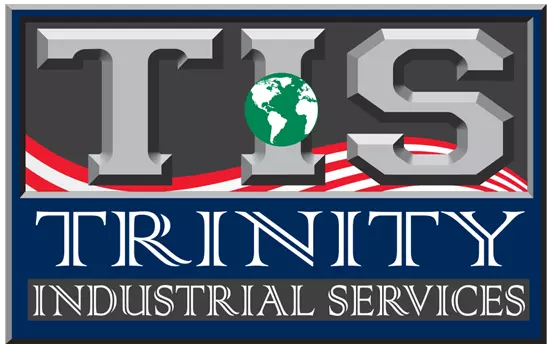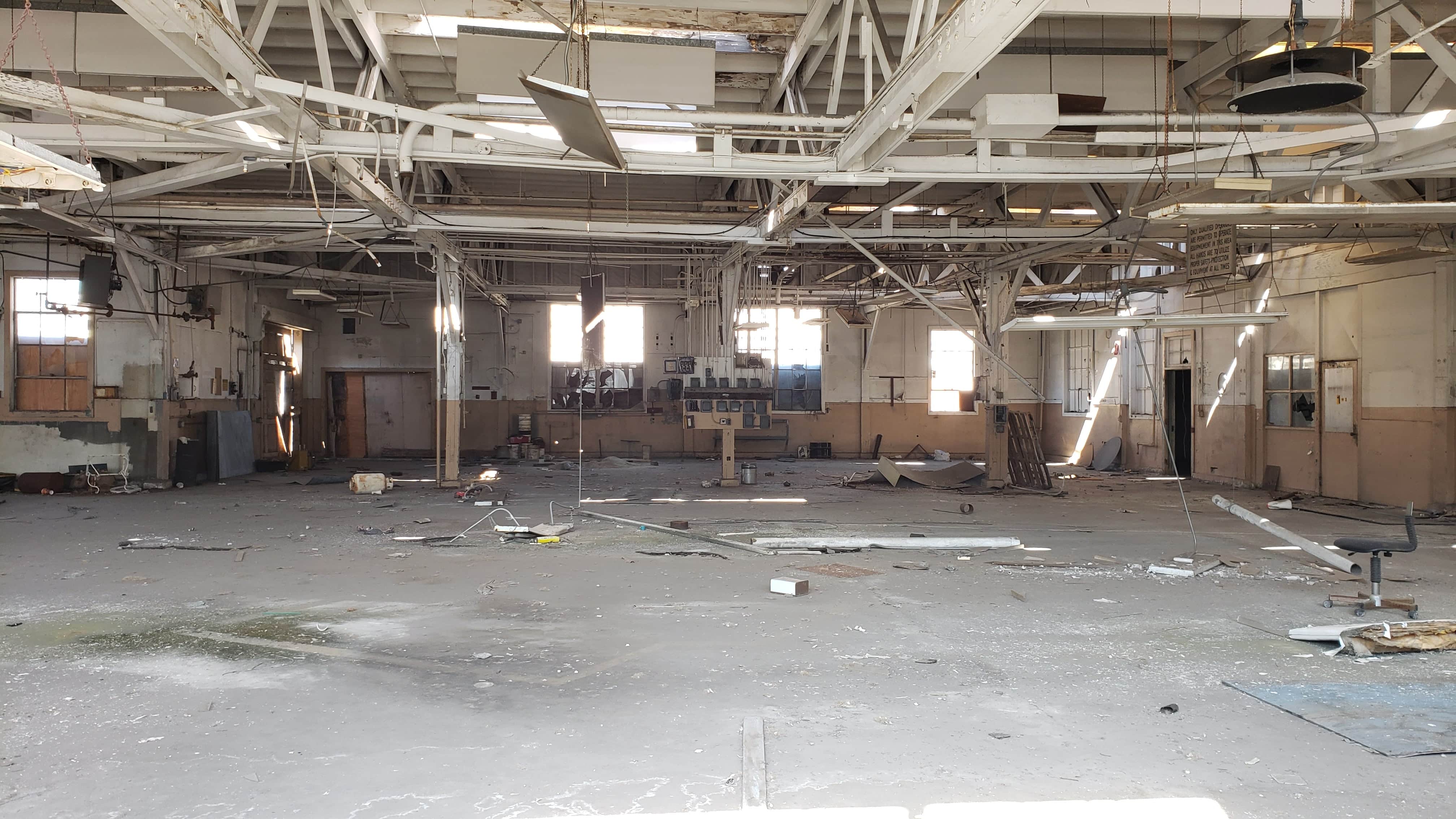What is asbestos abatement?
Asbestos abatement refers to the process of removing asbestos-containing materials from a building in a safe and controlled manner to prevent the release of asbestos fibers into the air.
How much does Asbestos Abatement Cost?
The cost of asbestos abatement varies widely depending on several factors such as the type and amount of asbestos-containing material, the location of the building, and the size of the project. On average, the cost of asbestos removal ranges from $2,500 to $7,500 for a small residential project to tens of thousands of dollars for a large commercial project.
How is Asbestos Abatement Done?
Asbestos abatement is usually done in the following steps:
- Inspection and Testing: A professional asbestos inspector will determine the presence and type of asbestos-containing materials.
- Planning and Preparation: A plan for removing the asbestos will be developed and the area will be prepared for the abatement process.
- Containment: The work area will be sealed off to prevent the spread of asbestos fibers.
- Removal: The asbestos-containing material will be removed and disposed of in approved containers.
- Cleanup: The work area will be thoroughly cleaned to remove any remaining asbestos fibers.
- Clearance: A professional inspector will perform final air monitoring to confirm that the area is safe for reoccupation.
Note: Only licensed asbestos abatement professionals should handle asbestos removal to ensure the safety of workers and the public.
How long does asbestos abatement take?
The duration of asbestos abatement varies depending on the size and complexity of the project. On average, a small residential project can take 1 to 3 days to complete, while a larger commercial project can take several weeks or more. Factors such as the type and amount of asbestos-containing material, the location of the building, and the scope of the project will impact the duration of the abatement process.
Does home insurance cover asbestos abatement?
It depends on the specific home insurance policy. Some insurance policies may cover the cost of asbestos abatement as part of a larger claim, such as a natural disaster or fire. However, most standard home insurance policies do not cover the cost of asbestos removal, which is considered a pre-existing condition. It is best to review your policy or contact your insurance provider to determine if asbestos abatement is covered.
Who is responsible for asbestos in commercial buildings?
The responsibility for asbestos in commercial buildings typically falls on the building owner. The building owner is responsible for ensuring that the asbestos is properly managed and disposed of in a safe and regulated manner. This includes conducting regular inspections, implementing a management plan, providing information and training to building occupants, and ensuring that asbestos removal is performed by licensed professionals. Failure to properly manage asbestos can result in fines and legal liability, so it is important for building owners to take this responsibility seriously.
What to do if asbestos is found in a building?
If asbestos is found in a building, the following steps should be taken:
- Do not disturb it: Do not attempt to remove or disturb asbestos-containing material yourself. Asbestos fibers can become airborne when disturbed, which can pose serious health risks.
- Hire a professional: Contact a licensed asbestos abatement contractor to perform an inspection and determine the extent of the asbestos problem.
- Develop a management plan: Work with the contractor to develop a plan for managing the asbestos, including any necessary removal or containment.
- Notify occupants: Inform building occupants of the presence of asbestos and any plans for removal or containment.
- Follow regulations: Ensure that all asbestos removal and disposal is performed in accordance with local, state, and federal regulations.
- Monitor the situation: Regularly inspect the asbestos and conduct air monitoring to ensure that it remains in good condition and does not pose a health risk.
Note: Asbestos abatement should only be performed by licensed professionals to ensure the safety of workers and the public.
Is Asbestos Abatement Safe?
Asbestos abatement can be safe when performed by trained and licensed professionals using proper protective equipment and procedures. The use of specialized equipment and strict protocols for containment, removal, and disposal help to minimize the risk of exposure to asbestos fibers. However, asbestos fibers can still become airborne during the abatement process, so it is important to take the necessary precautions to protect workers and the public.
To ensure the safety of all involved, it is important to follow all local, state, and federal regulations regarding asbestos abatement, including proper notification and training procedures, the use of approved protective equipment, and proper disposal methods.
What is the difference between Category 1 and Category 2 in asbestos?
Category 1 and Category 2 refer to the two categories of asbestos-containing materials (ACMs) used to categorize the relative risk of asbestos fibers being released into the air.
- Category 1: Friable asbestos-containing materials are materials that are easily crumbled, pulverized, or reduced to powder by hand pressure. Examples include spray-applied asbestos insulation and loose asbestos-containing insulation. These materials pose the highest risk of releasing asbestos fibers into the air and are therefore classified as Category 1.
- Category 2: Non-friable asbestos-containing materials are materials that are bound or molded into a solid matrix. Examples include asbestos floor tiles, asbestos-containing roofing materials, and asbestos-containing siding. These materials are less likely to release asbestos fibers into the air and are classified as Category 2.
Note: Both Category 1 and Category 2 ACMs can pose a health risk if disturbed, so proper management and removal procedures are important for all asbestos-containing materials, regardless of their classification.
What does 1% asbestos mean?
A material containing 1% asbestos refers to a material where asbestos fibers make up 1% of the total volume of the material. This is often used to describe the concentration of asbestos in building materials, such as insulation, roofing, or floor tiles.
It is important to note that even small amounts of asbestos fibers can pose a health risk if the fibers become airborne and are inhaled. Therefore, it is important to take proper precautions when handling materials containing asbestos, regardless of their concentration.
Can I sell a commercial property without an asbestos survey?
Yes, you can sell a commercial property without an asbestos survey, but it is highly recommended. In many cases, buyers will require an asbestos survey as a condition of purchase, and the sale of a commercial property may be delayed or blocked if asbestos is found and not properly managed.
An asbestos survey provides valuable information about the presence and condition of asbestos-containing materials in the building, which can help to protect the health and safety of building occupants and reduce the risk of legal liability.
In addition, some states and localities have laws and regulations requiring the disclosure of asbestos in commercial buildings. Failure to disclose the presence of asbestos can result in fines and legal liability, so it is in the best interests of the property owner to have an asbestos survey conducted before the sale of the property.
Is a tenant responsible for asbestos?
Typically, tenants are not responsible for asbestos in a commercial building. The responsibility for asbestos management and abatement usually falls on the building owner or the person who controls the property. The building owner is responsible for ensuring that the asbestos is properly managed, contained, and disposed of in a safe and regulated manner.
However, tenants have a responsibility to cooperate with building owners and landlords in ensuring that asbestos is properly managed and not disturbed. Tenants should also be aware of the presence of asbestos in the building and take necessary precautions to avoid disturbing it.
It is important to note that failure to properly manage asbestos can result in fines and legal liability for both the building owner and the tenant, so it is in everyone’s best interests to work together to ensure that asbestos is properly managed.
What is lead based paint abatement?
Lead-based paint abatement is the process of removing or encapsulating lead-based paint in buildings. Lead-based paint was commonly used in buildings built before 1978, and it can pose a serious health risk, especially to young children and pregnant women, if it is disturbed and becomes airborne.
Lead-based paint abatement typically involves several steps, including:
- Testing: A professional will test surfaces in the building to determine if they contain lead-based paint.
- Containment: The work area will be contained to prevent the spread of lead dust and debris.
- Removal: The lead-based paint will be removed using specialized tools and techniques that minimize the release of lead dust and debris into the air.
- Clean-up: The work area will be thoroughly cleaned to remove any remaining lead dust and debris.
- Encapsulation: In some cases, encapsulation may be used as an alternative to removal, where a specialized coating is applied over the lead-based paint to contain it and prevent its release.
Lead-based paint abatement should only be performed by trained and licensed professionals using proper protective equipment and procedures. Improper abatement can result in exposure to lead and other health hazards, so it is important to follow all local, state, and federal regulations regarding lead-based paint abatement.
What is mold remediation?
Mold remediation is the process of identifying and removing mold growth from a building. Mold can grow in damp or humid environments, and it can cause health problems, property damage, and unpleasant odors.
Mold remediation typically involves several steps, including:
- Assessment: A professional will assess the extent and type of mold growth in the building.
- Containment: The work area will be contained to prevent the spread of mold spores and spores.
- Removal: The mold will be removed using specialized tools and techniques that minimize the release of mold spores into the air.
- Clean-up: The work area will be thoroughly cleaned to remove any remaining mold spores and prevent new mold growth.
- Prevention: Steps will be taken to prevent future mold growth, such as fixing leaks and improving ventilation.
Mold remediation should only be performed by trained and licensed professionals using proper protective equipment and procedures. Improper remediation can result in exposure to mold and other health hazards, so it is important to follow all local, state, and federal regulations regarding mold remediation.
What are OSHA regulations for Abatement?
OSHA (Occupational Safety and Health Administration) is a federal agency that sets and enforces workplace safety standards. OSHA has specific regulations for abatement work, which is work that involves the removal, encapsulation, or enclosure of hazardous materials such as asbestos, lead-based paint, and mold.
OSHA regulations for abatement work include:
- Respiratory protection: Workers performing abatement work must wear appropriate respiratory protection to prevent inhalation of hazardous materials.
- Protective clothing: Workers must wear protective clothing to prevent skin exposure to hazardous materials.
- Containment: Work areas must be contained to prevent the spread of hazardous materials.
- Work practices: Workers must follow specific work practices to minimize the release of hazardous materials into the air and to prevent exposure to hazardous materials.
- Waste disposal: Hazardous waste generated during abatement must be properly disposed of in accordance with federal, state, and local regulations.
- Recordkeeping: Employers must keep records of abatement work, including the type of work performed, the dates it was performed, and the names of the workers who performed the work.
OSHA regulations for abatement work are designed to protect workers from exposure to hazardous materials and to minimize the risk of health and environmental hazards. Employers who perform abatement work must comply with these regulations and ensure that their workers are properly trained and equipped to perform the work safely.
How is an asbestos evaluation performed (for a building)?
An asbestos evaluation of a building is a process that determines the presence, location, and condition of asbestos-containing materials (ACMs) in the building. An asbestos evaluation typically involves several steps:
- Inspection: A visual inspection of the building is performed to identify potential ACMs, such as insulation, floor tiles, roofing materials, and textured paint.
- Sampling: Samples of suspected ACMs are taken and sent to a laboratory for analysis.
- Laboratory analysis: The laboratory will analyze the samples to determine if they contain asbestos and what type of asbestos they contain.
- Reporting: The results of the asbestos evaluation will be documented in a report that includes the location and condition of the ACMs, as well as recommendations for handling and managing the ACMs.
The purpose of an asbestos evaluation is to determine the presence and extent of ACMs in a building so that appropriate steps can be taken to manage the risk of exposure to asbestos. An asbestos evaluation should be performed by a qualified and licensed asbestos professional who is trained in asbestos evaluation procedures and who follows all relevant federal, state, and local regulations regarding asbestos.
How do you decontaminate materials during asbestos removal?
Materials contaminated with asbestos fibers during removal must be decontaminated to prevent the spread of asbestos fibers. The following are the steps to decontaminate materials during asbestos removal:
- Containment: The work area must be contained to prevent the spread of asbestos fibers. This may involve setting up negative air pressure systems and using plastic sheeting to isolate the work area.
- Wetting: The contaminated materials must be wetted to prevent the release of asbestos fibers into the air. This is typically done by misting the materials with water.
- Removal: The contaminated materials must be removed from the work area and placed in leak-tight containers for disposal.
- Cleaning: All surfaces in the work area, including equipment, tools, and clothing, must be thoroughly cleaned to remove any remaining asbestos fibers.
- Disposal: The contaminated materials must be disposed of in accordance with federal, state, and local regulations. This typically involves sealing the materials in leak-tight containers and labeling them as hazardous waste.
The decontamination of materials during asbestos removal is an important step to prevent exposure to asbestos fibers and to minimize the risk of health and environmental hazards. It is important to follow all relevant federal, state, and local regulations regarding asbestos decontamination and to use proper protective equipment and procedures to perform the work safely.
What is Lead dust sampling?
Lead dust sampling is a process used to determine the presence and concentration of lead dust in a building or on surfaces. Lead dust can be generated from lead-based paint or other sources of lead, and can pose a health risk if inhaled or ingested. Lead dust sampling is typically performed by a certified lead inspector or risk assessor and involves the following steps:
- Surface preparation: The surface to be tested must be cleaned and prepared to remove any loose dust or debris.
- Sampling: Samples of the lead dust are collected using specialized equipment, such as wipes, swabs, or sticky mats.
- Analysis: The samples are analyzed in a laboratory to determine the presence and concentration of lead dust.
- Reporting: The results of the lead dust sampling are documented in a report, which includes the location and concentration of the lead dust, as well as recommendations for abatement or remediation.
Lead dust sampling is an important step in determining the presence and extent of lead in a building, and is typically performed as part of a lead risk assessment or as part of a lead abatement project. The results of lead dust sampling can be used to determine the need for lead abatement or remediation, and to ensure that the lead hazard is properly managed to protect public health and the environment.
What is Mold Sampling (building)?
Mold sampling in a building is a process used to determine the presence, type, and concentration of mold in the indoor environment. Mold sampling involves the following steps:
- Inspection: A visual inspection of the building is conducted to identify visible mold growth and areas of moisture intrusion that may contribute to mold growth.
- Sampling: Samples of the mold are collected using specialized equipment, such as air samples, surface samples, or bulk samples.
- Analysis: The samples are analyzed in a laboratory to determine the type and concentration of mold present.
- Reporting: The results of the mold sampling are documented in a report, which includes the location and type of mold found, as well as recommendations for remediation and further testing if necessary.
Mold sampling is an important step in determining the presence and extent of mold in a building and is typically performed as part of a mold assessment or as part of a mold remediation project. The results of mold sampling can be used to determine the need for mold remediation and to ensure that the mold hazard is properly managed to improve indoor air quality and protect public health.
What is Asbestos testing?
Asbestos testing is the process of determining the presence of asbestos in a material or building. It involves collecting samples of the suspect material and analyzing them in a laboratory to confirm the presence and type of asbestos fibers. Asbestos testing is typically performed by a certified asbestos inspector or laboratory, and is an important step in identifying and managing asbestos hazards in buildings and other structures.
Asbestos testing may be performed for a variety of reasons, including:
- Building inspections: To determine if asbestos-containing materials are present in a building prior to renovation or demolition.
- Risk assessment: To determine the potential asbestos exposure risk to building occupants and workers.
- Abatement verification: To verify that asbestos-containing materials have been properly removed during an asbestos abatement project.
- Air monitoring: To monitor the air for asbestos fibers during and after an asbestos abatement project.
The results of asbestos testing are documented in a report, which includes the location and type of asbestos found, as well as recommendations for further action if necessary. Proper asbestos management is essential to protect public health and the environment from the dangers associated with asbestos exposure.
How is an Asbestos test performed?
An asbestos test is performed by collecting a sample of the suspect material and analyzing it in a laboratory to determine the presence and type of asbestos fibers. The following steps outline the general process for conducting an asbestos test:
- Sample collection: A trained asbestos inspector will collect a sample of the suspect material using specialized equipment, such as a scalpel or special tape. The sample should be collected in a manner that minimizes the release of asbestos fibers into the air.
- Laboratory analysis: The collected sample is sent to a laboratory for analysis, where the sample is prepared and examined under a microscope to determine the presence and type of asbestos fibers.
- Reporting: The results of the asbestos test are documented in a report, which includes the location and type of asbestos found, as well as recommendations for further action if necessary.
It is important to note that asbestos testing should only be performed by a trained and certified asbestos inspector or laboratory, as proper handling and analysis of asbestos samples is critical to ensure accurate results and minimize the release of asbestos fibers into the air. Proper asbestos management is essential to protect public health and the environment from the dangers associated with asbestos exposure.
How much does Asbestos testing cost?
The cost of asbestos testing can vary depending on several factors, including the size and complexity of the project, the type of material being tested, the location of the property, and the laboratory performing the analysis. On average, the cost of asbestos testing can range from $300 to $800 or more, although larger projects or multiple tests may cost more.
It is important to note that the cost of asbestos testing is a small investment compared to the potential health risks and costs associated with exposure to asbestos fibers. Asbestos testing is an essential step in identifying and managing asbestos hazards in buildings and other structures, and can help to ensure that appropriate measures are taken to protect public health and the environment.







